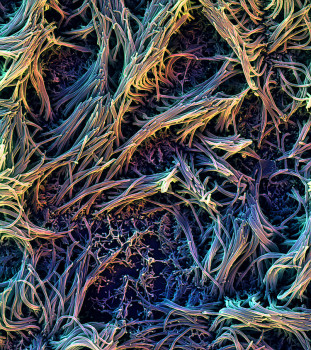Project
Establishing an 'old' and 'young' alveolar model to assess the impact of senescence on immunity to viruses
| Primary Investigator: | Dr Emma Chambers Queen Mary University of London |
| Funder: | Emulate/Organ-on-a-chip Network Proof-of-concept Award |
| Project dates: | 01-05-2021 to 01-07-2021 |
| Centre dates: | 20-09-2021 to 04-10-2021 |
Aging is a global trend. Although this is good news, we are unfortunately we are living longer with chronic illnesses and infections which has a massive detrimental impact on quality of life and the health care system. As evident from the current pandemic, older adults (≥65 years) are more at risk of severe disease and death from respiratory infections such Flu or COVID19. Although it is known that there are alterations in white blood cells that can make older individuals more susceptible to infection, there is clearly a lung-specific component too as the elderly are most susceptible to lung-targeted infections.
The lungs change structurally as we age with increased rigidity resulting in decreased lung function. In addition, recent evidence from my lab has shown that there is an accumulation of 'older' cells that are called senescent cells. Senescent cells do not undergo division and do not die, instead these cells are incredibly inflammatory, producing a plethora of inflammatory proteins which is detrimental to a functioning immune system. From my recently published work, we now know that this senescence cell derived inflammation axis in older individuals is detrimental for the proper functioning of the immune system. Therefore, the aim of this research is to build a model of 'young' and 'old' human lungs by incorporating senescent cells into the lung chip model, we will then investigate how these senescent cells hinder immune responses to viruses.
This funding will be used to optimise current known experimental techniques and apply it in the alveolar chip. Through this method there will be an optimisation of the technique to understand what amount of chemical is needed to induce either senescent lung cells or senescent blood vessel cells in the alveolar tissue chip (old lungs) and these will be compared to alveolar chip that is not senescent (young lungs). Once this is optimised, white blood cells will be added to young and old lung chips and the effect of the old lungs on white blood cells will be assessed.
Together this funding will provide preliminary data to support my fellowship applications and also generate an exciting new way of looking at old and young lungs without the need to use mouse experiments or biopsy individuals.



